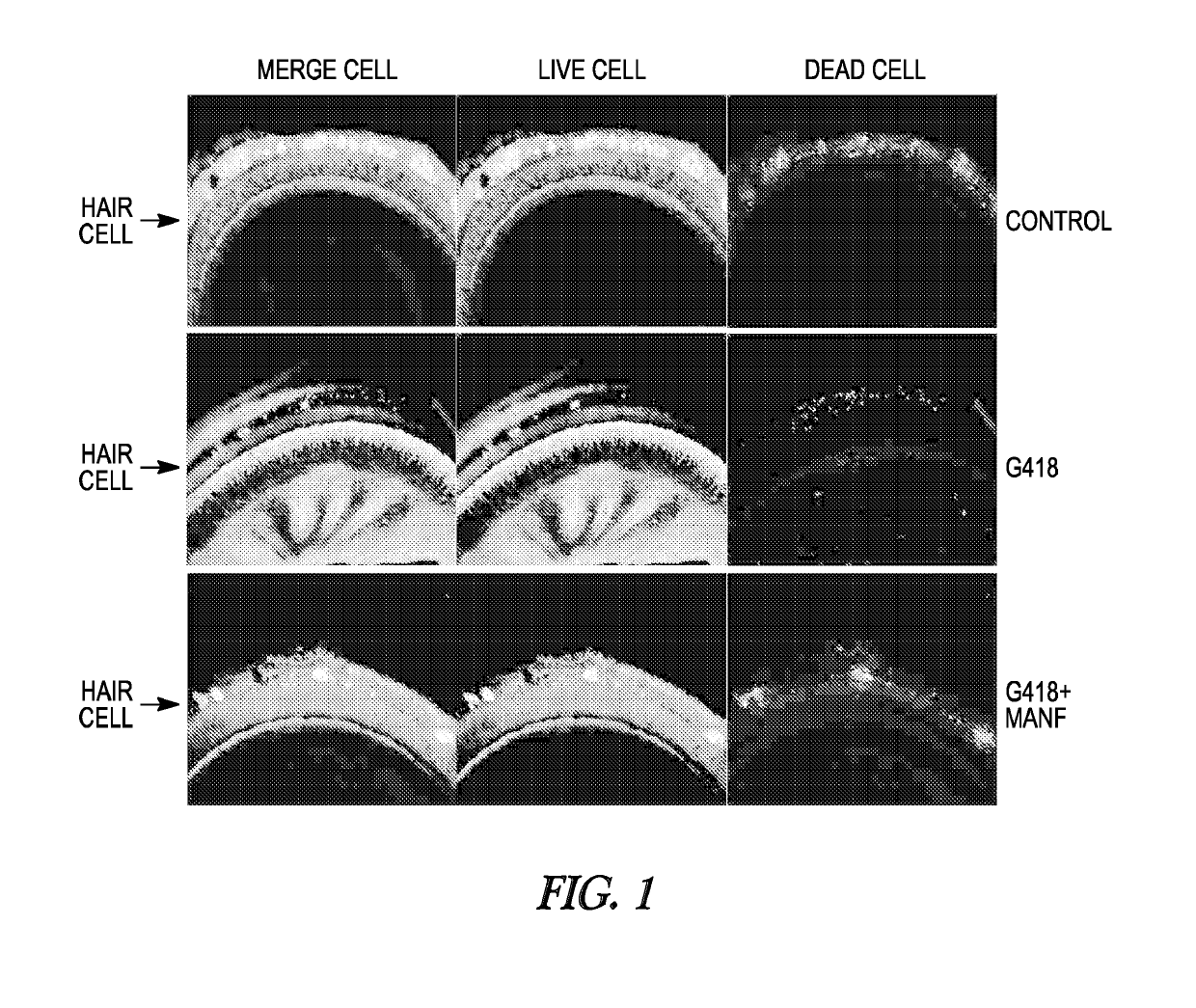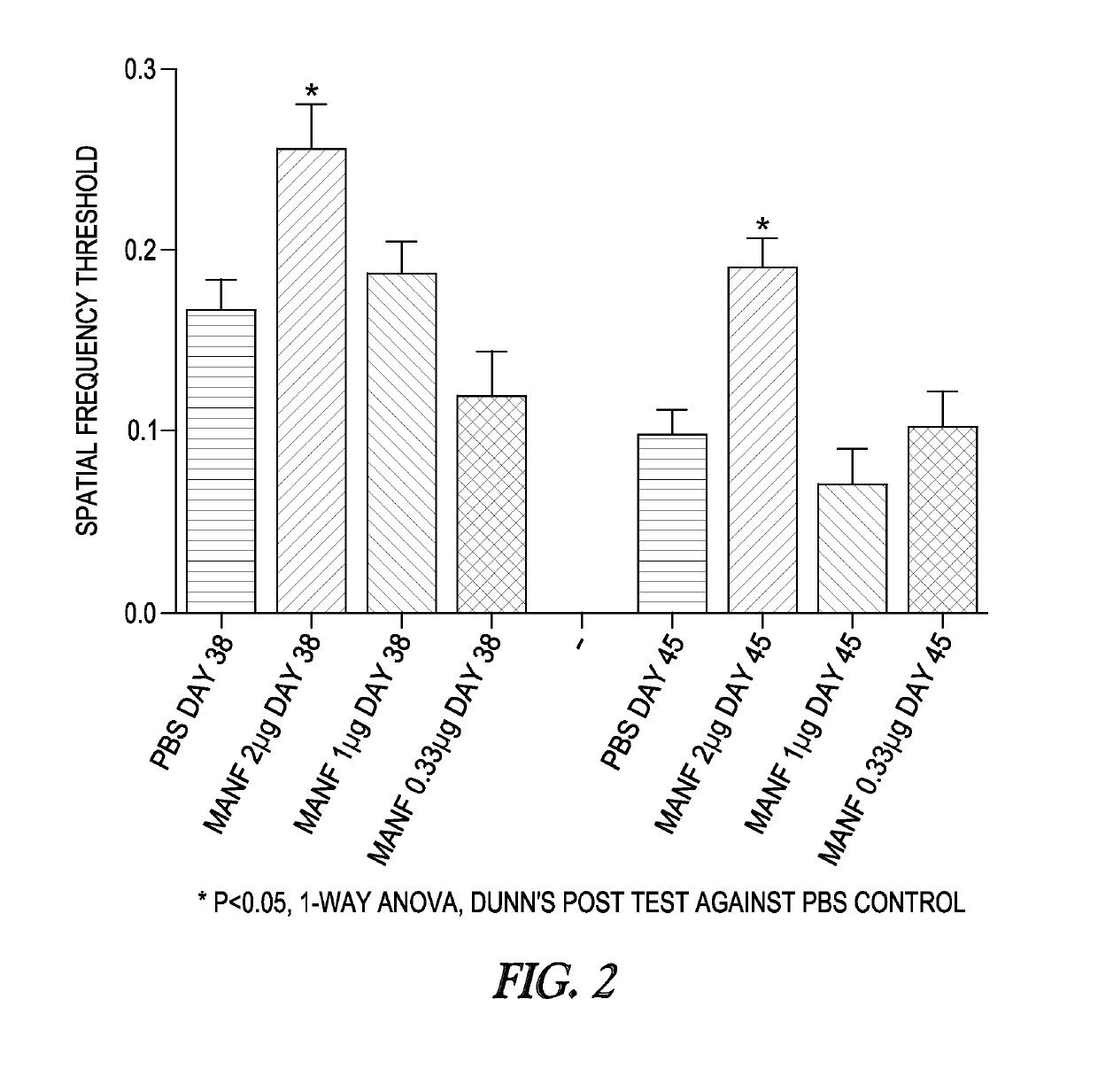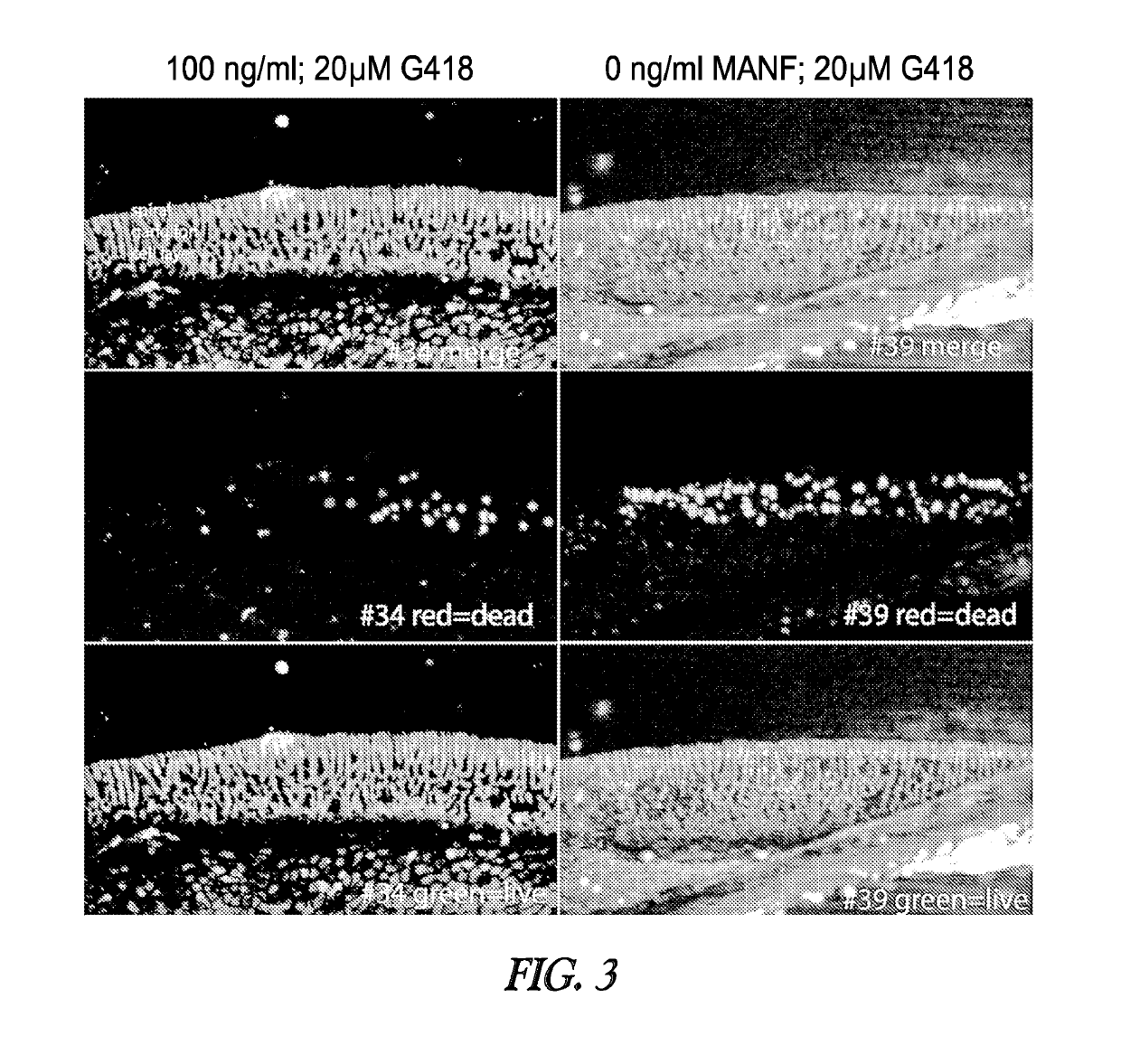Method of administering MANF for the protection of sensory cells
a technology for sensory cells and manf, applied in the direction of peptide/protein ingredients, drug compositions, sense disorders, etc., can solve the problems of destroying the cells required for light detection and vision, partial or complete loss of hearing, vision, taste, smell, or touch,
- Summary
- Abstract
- Description
- Claims
- Application Information
AI Technical Summary
Benefits of technology
Problems solved by technology
Method used
Image
Examples
example 1
ects Hair Cells in an In Vitro Assay of Hair Cell Survival
[0346]This example demonstrates the ability of MANF to protect hair cells in the cochlea from ototoxic stimuli in an in vitro cochlea organ culture.
[0347]Briefly, on the first day, the middle part of the cochlea is dissected out from p5 rat pups. The cochlea are placed on coverslips coated with poly-ornithine and laminin and cultured in p35 dishes with 2 mL of cochlea culture media. Three conditions are performed: an untreated control, a treatment with G418 only, and a treatment with MANF and G418. On the second day, in the experimental condition, the cultured cochlea are treated with 100 ng / mL of MANF. On the third day, the appropriate cultured cochlea are treated with 1 μg G418. On the fourth day, Live / Dead cell viability reagents are added to all of the cultured cochlea according to the manufacturer's protocol, and the cultured cochlea are imaged on a fluorescence dissecting microscope. Exemplary images are shown in FIG. 1...
example 2
ndent Evaluation of Mesencephalic Astrocyte-Derived Neurotrophic Factor (MANF) to Prevent Visual Acuity Loss and Photoreceptor Cell Loss in Rd10 / Rd10 Mice
[0350]Objective:
[0351]To determine the efficacy of Mesencephalic Astrocyte-derived Neurotrophic Factor (MANF) to prevent loss of visual acuity and photoreceptor cells following intravitreal delivery to rd10 / rd10 mice, a mouse model of retinitis pigmentosa.
[0352]Materials and Methods:
[0353]Test Compound and Vehicle:
[0354]The test compound is prepared from a stock solution of rhMANF (3 mg / mL). The vehicle is PBS pH 7.4.
[0355]Recombinant human mesencephalic astrocyte-derived neurotrophic factor (rhMANF) is used. rhMANF is expressed in a Chinese hamster ovary (CHO)-based cell line using QMCF technology and purified by ion-exchange and gel-filtration chromatography from serum-free CHO growth medium. The rhMANF is homogenous, as determined by mass-spectroscopy and displayed a molecular weight of 18142.3 Da. Coomassie-stained SDS-PAGE and...
example 3
f MANF on Cochlear Hair Cell Survival
[0376]Background
[0377]MANF is well established as a neurotrophic factor that can rescue certain neurons from cell death induced by a variety of insults. This example tests the hypothesis that MANF could protect cochlear hair cells from cell death induced by antibiotics and other ototoxic insults. The results show that MANF can protect ganglion cells and hair cells from antibiotic-associated ototoxicity.
[0378]Experimental Design
[0379]Cochleae from P0-P3 rat pups are isolated and then cultured in vitro in the presence or absence of G418 (Geneticin), an ototoxic aminoglycoside antibiotic. Some cochleae are pre-treated with varying levels of MANF to assess protection. Following treatment, cultures are stained with different vital dyes to determine the anatomy and viability of the cells. The Live / Dead reagent (Molecular Probes) is used to label living cells green with calcien-AM and dead cells red with ethidium bromide heterodimer. A separate fluoresc...
PUM
 Login to View More
Login to View More Abstract
Description
Claims
Application Information
 Login to View More
Login to View More - R&D
- Intellectual Property
- Life Sciences
- Materials
- Tech Scout
- Unparalleled Data Quality
- Higher Quality Content
- 60% Fewer Hallucinations
Browse by: Latest US Patents, China's latest patents, Technical Efficacy Thesaurus, Application Domain, Technology Topic, Popular Technical Reports.
© 2025 PatSnap. All rights reserved.Legal|Privacy policy|Modern Slavery Act Transparency Statement|Sitemap|About US| Contact US: help@patsnap.com



